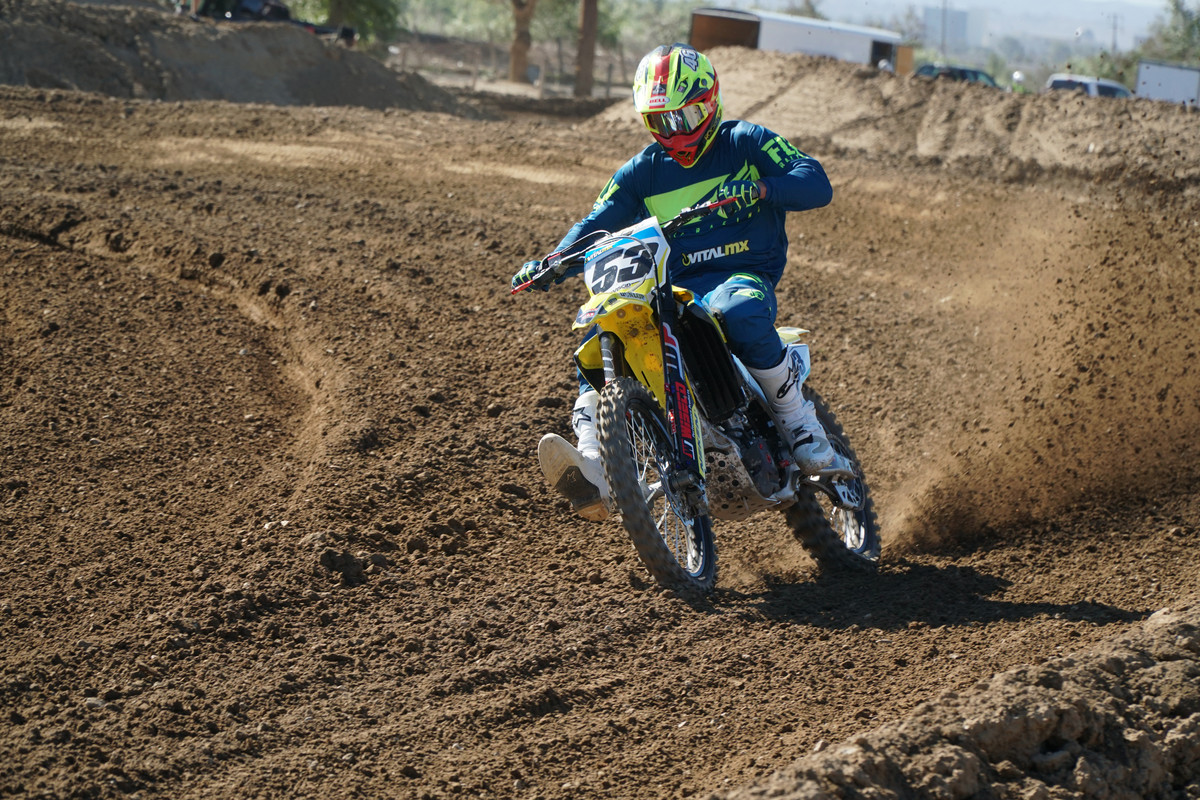Recently, Vital MX set out to improve the 2019 RM-Z450 enough to run with the top 450 shootout bikes. Check out all the mods and equipment this Suzuki received, and what the riders thought afterward.
Original write-up from Vital MX. Click here to check out their page.
When the dust settles after a 450 shootout, it’s easy to focus on the winning bike and forget about the rest, especially the last place machine. For 2019, that machine again was the RM-Z450, which has been at the back of the pack for a couple years. Now, to put this in perspective, all of our testers could put down fast laps on the RM-Z in the shootout, but it just took more mental and physical energy to do it. For some testers, they couldn’t deal the overall harsh chassis feeling of the bike, and others felt that it just didn’t do anything necessarily better than the other bikes.
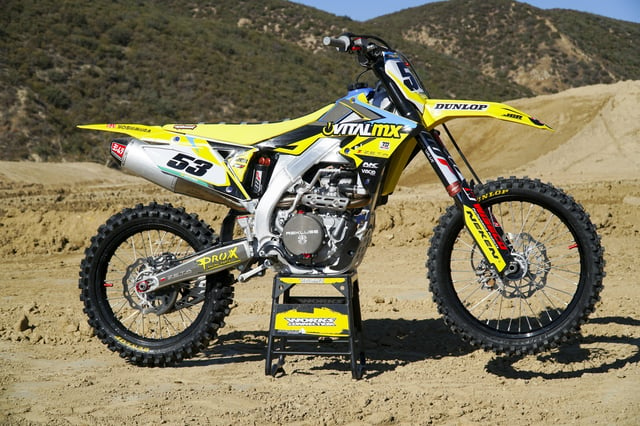
One of the first issues we wanted to address was the harsh chassis feeling, yet as we all know, there aren’t that many options to change the ride characteristic of a frame. But we did reach out to FCP Racing (Factory Chassis Parts) to get some new engine mounts they developed with the goal of giving the chassis a more compliant feeling. In the same category, we wanted to see how WP suspension would feel on a Suzuki, just because we haven’t seen to many yellow bikes with Austrian A-kit forks and shocks. We got our hands on the WP Cone Valve Fork and Trax Shock for the RM-Z. Why A-kit? Well, WP wanted to send their best stuff to test so we let them.
In the power department, we wanted to get more excitement from the slow revving, slightly retro feeling stock motor. We put in a Wiseco Racer Elite 14.0:1 piston to get a bigger bang from each compression stroke. To help it breathe more freely we also put on a Yoshimura RS-4 full exhaust system. And to get every last ounce of power to the rear wheel, we installed a Rekluse CoreManual TorqDrive clutch which has a higher torque capacity than stock clutches because it has more plates in the same amount of space. Finally we sent the bike over to Twisted Development to install and map a Vortex ECU for the RM-Z. Some ECUs can be left stock and engine tuners can work with special programs to change mapping but with the Suzuki, the more efficient way to go was to use a Vortex.
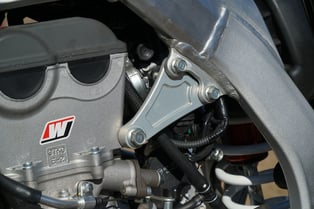
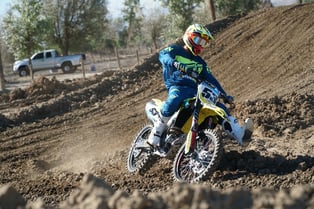
For the final drive, the RM-Z450 was fitted with a set of ProX sprockets and a standard, 520MX ProX gold chain. To track maintenance after the engine build, the bike also received a ProX hour meter.
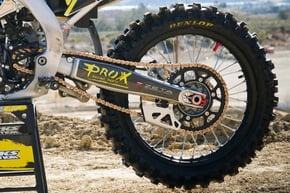
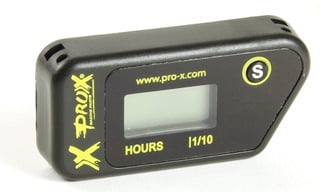
Check out more on ProX chains and sprockets here.
Testers
Sean Klinger, 5’8”, 210 lb, Vet Novice
Derrick Caskey, 6’2”, 190 lb, 40+ Intermediate
On The Track: Suspension
We know a lot of you guys are thinking, “If you put A-kit suspension on the bike, how can it not be good?” Well, the WP stuff is really good, but what we were testing out was how the RM-Zs rigid, but easy turning chassis reacts to a whole different kind of suspension, and to see if the stock suspension is part of the problem. And it sort of is. Since the main testers for this build were close to 200 pounds, we had WP set the spring rate for that weight range.
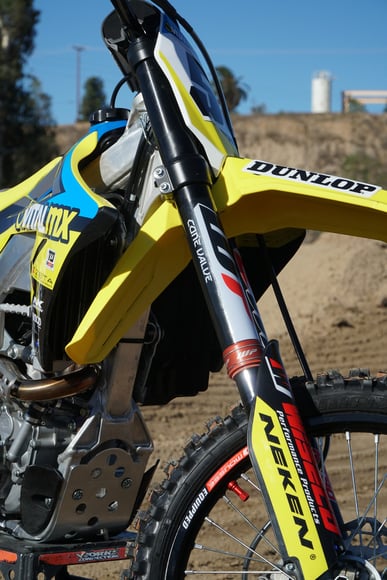
For those that aren’t familiar with Cone Valve forks and Trax Shocks from WP, the long version is explained in this video, but here is the short version. The fork has a different mid-speed valve with a cone and spring that works a little differently than a traditional mid-speed valve with shims. The main point of this system is that by using different angled cones, different spring rates and different preload on the spring, the adjustability is nearly infinite. The special feature of the Trax shock is a unique rebound circuit that knows if the wheel is off the ground and opens a bypass valve to let the shock fully extend much faster than a traditional shock rebound circuit.
Klinger’s Take On The Suspension
“I really didn’t like riding the RM-Z450 during the 450 shootout. I was scared to jump some of the bigger hits because if I didn’t grease the landing, I wasn’t sure what the RM-Z was going to do. I felt like if I cased a jump, even a table top, I would get a weird bounce that would throw me out of control. Or if I OJ’d, I would break my ankles or wrists because it was so harsh. And I know that this is a combo of the chassis and suspension.
"After putting on the WP fork and shock, it was like night and day. It’s hard to tell engine mounts from suspension since they were changed at the same time, but for sure, the WP kit fork and shock made me actually enjoy riding the bike. I was jumping stuff first lap just because I had that much more confidence in the way the bike would react. The bottoming resistance is unreal, and and there is more control through the stroke, on both the fork and shock. This setup just settled the bike down for me. The fork felt like it was very plush initially, taking away most of the harsh feeling that the stock bike had, while increasing control and predictability. I did soften up the compression on the fork because I’m not a fast guy and was too high in the stroke. That being said the harder I pushed the better the bike felt. I did go like six clicks softer to see what that would feel like, but that was too much and I was deeper in the stroke where I was losing the comfort and control that I liked."
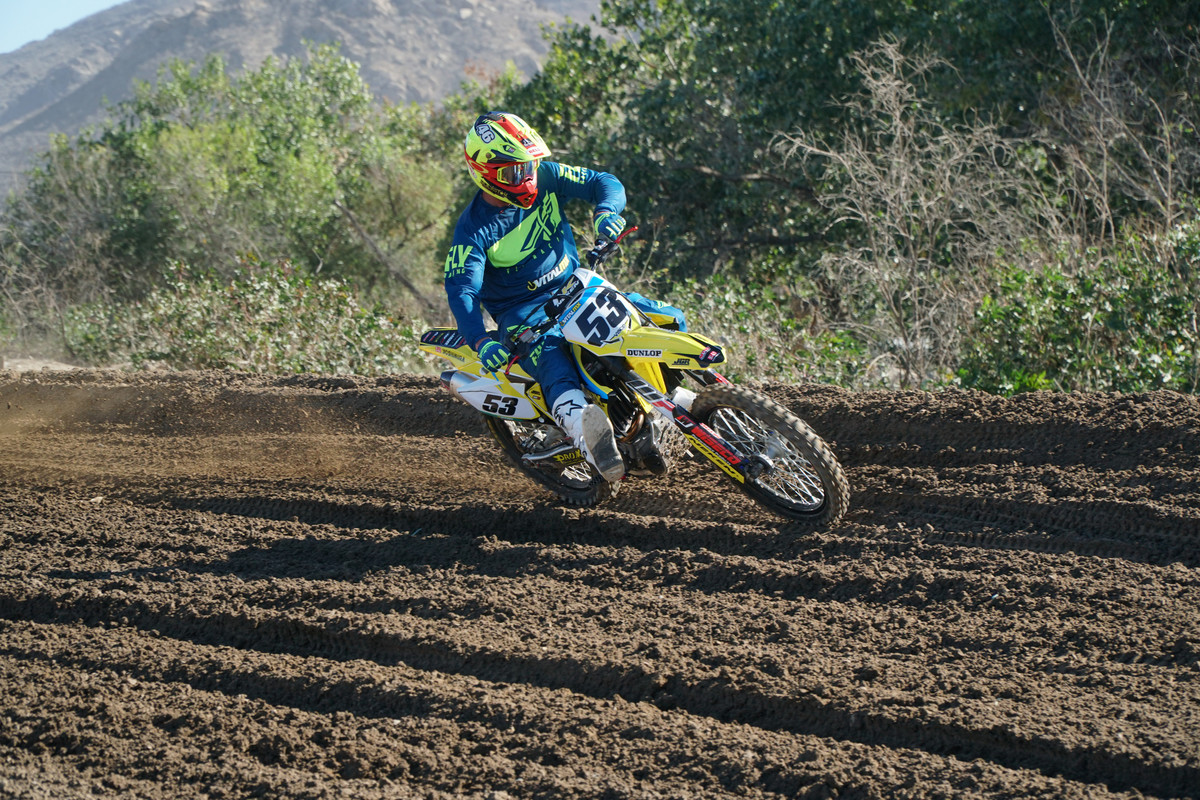
"I absolutely loved the Trax shock. I know some fast moto guys think it is too active if they are the type of riders that prefer a “dead feeling” rear, but I guess I’m not one of those guys. I felt like I had way more traction coming out of corners with a lot of acceleration chop and up Mount St. Helen (one day of testing was at Glen Helen) when it was super rough and chewed up. It was like the rear wheel followed the ground perfectly and I didn’t have to let off the throttle to regain traction after a bump or chunky section.”
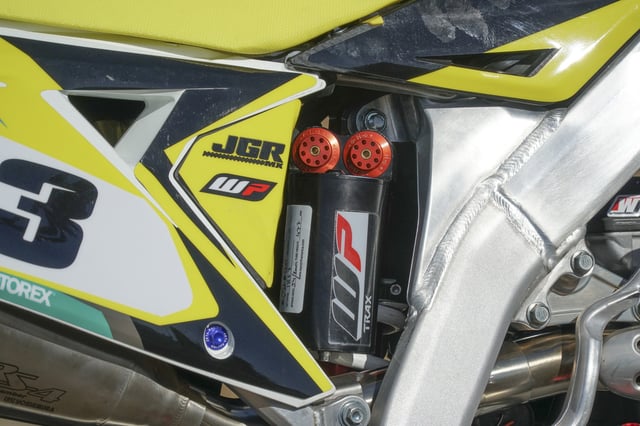
Caskey’s Take On the Suspension
“A-kit WP Cone Valve forks and Trax shock is not the cheapest route for dialing the Suzuki suspension, but was a huge improvement. The suspension immediately felt very balanced front to rear and made the bike a blast to ride. The forks were plush in the choppy smaller braking and acceleration bumps, but held up very well on big jumps and landings. The shock was dramatically better than stock, it felt planted and allowed the back to absorb rough choppy sections. The project bike cornered very well, and felt very stable on high speed sections that made you feel very confident and one with the bike. The combination allowed me to put in more laps without the same fatigue that was noticed on the stock bike.”
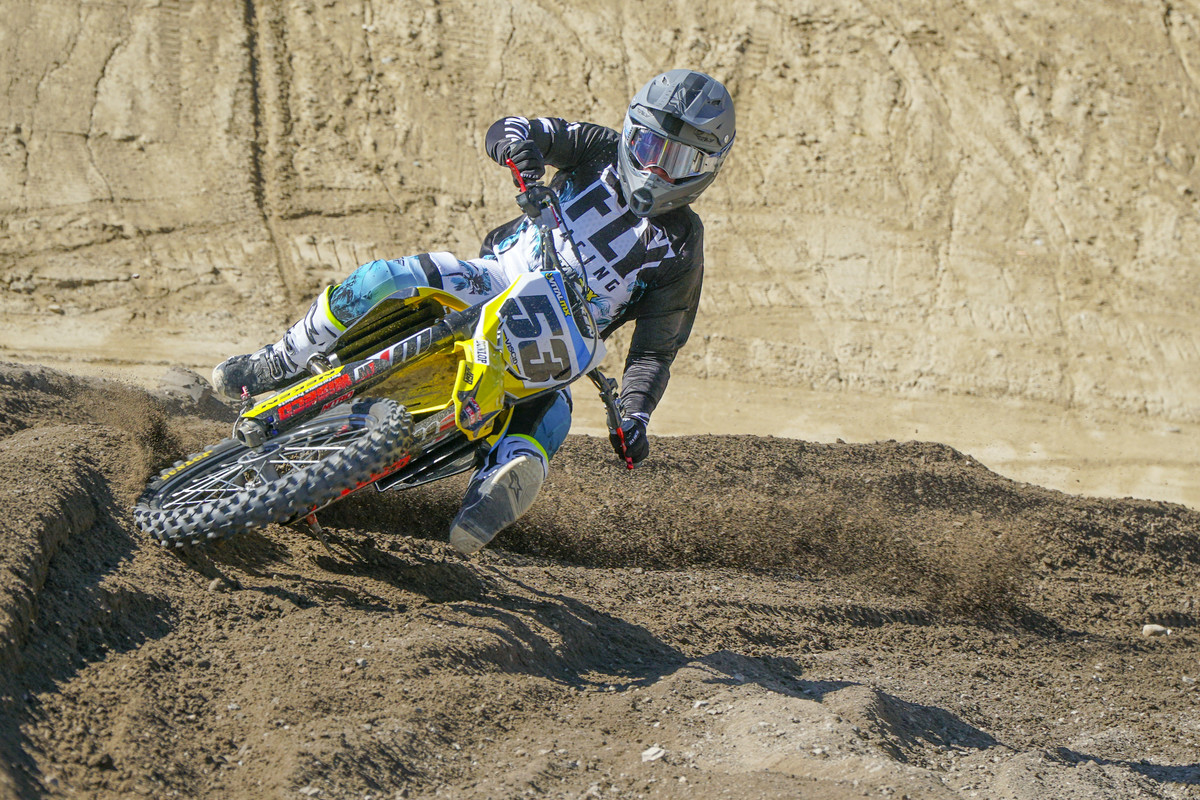
Does the Suzuki absolutely need A-Kit suspension to work? No, it doesn’t. And if people are honest with their riding ability, only pros and really fast amateurs are going to get the most out of factory level suspension. What we do know is that the harsh feeling can be toned down with suspension work. And we are happy we had the thinner engine mounts as well, since even with both mods, the RM-Z450 wasn’t buttery smooth like some other bikes.

On The Track: Motor
All modern 450’s make a ton of power, enough to satisfy any riders demands. But how that power is made is a different story. Some of it comes down to rider preference - revvers versus luggers, for example. But in the RM-Z450's case, most of our testers said that while the bike has linear, strong power, it is just sort of lacking in excitement and snap. For some, it wouldn’t get to the rpm they wanted fast enough, so we wanted to liven it up.
Klinger’s Take On The Motor:
“For me, the stock RM-Z450’s engine was a little confusing. It sounded and felt (through the bars and pegs) strong, but it didn’t respond to throttle input like I wanted, or at least have grown to expect by riding the other 450s with a way more lively feel. Since we put all the pieces together at once, we can’t dissect what the pipe, piston, and mapping are doing separately but as a package, it is like a whole different bike. Throttle response is super crispy and the motor revs freely and wicks up much more quickly through the rpm."
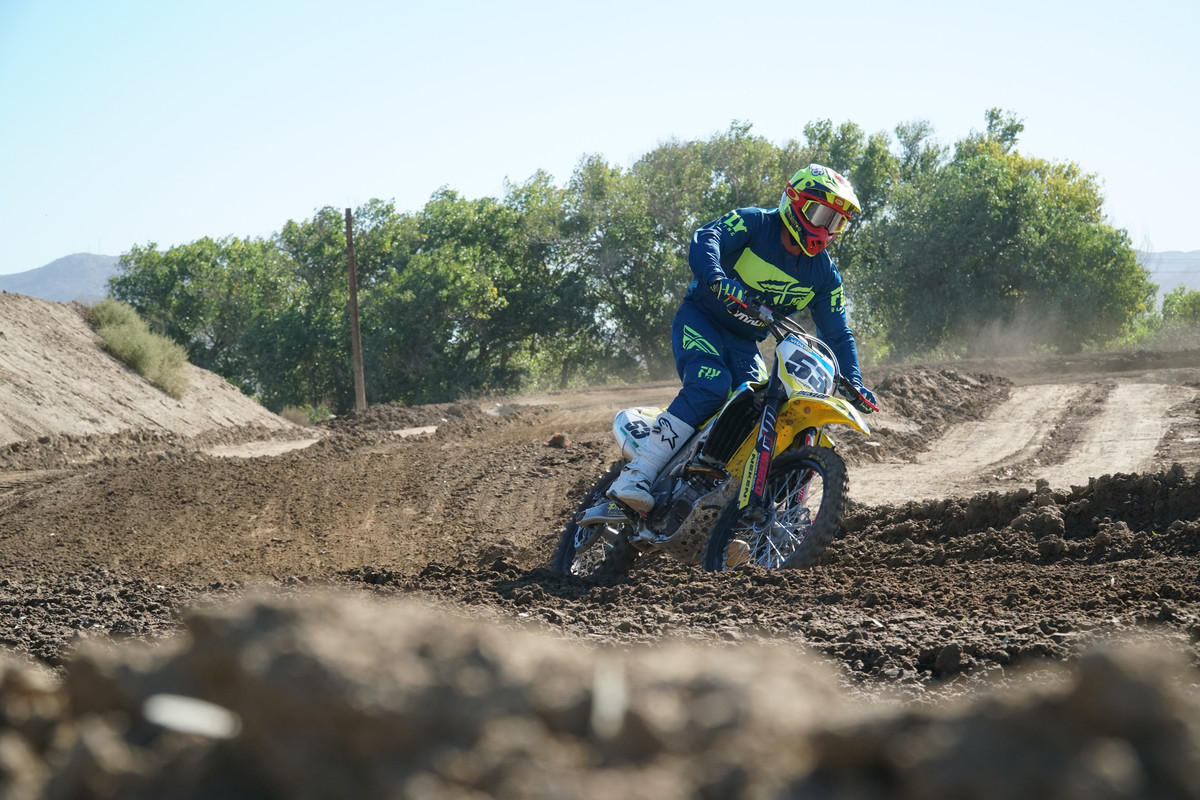
"It has a somewhat similar usable, linear pull that the stock bike has, it just reacts quicker to throttle input. I can get into the mid-range faster and use each gear more, rather than shifting gears all the time to find the power I was looking for. I also really liked the Rekluse TorqDrive clutch. The engagement point is small, but very smooth and has an extremely positive feel. We aren’t riding this bike off-road where you have to modulate to get through technical stuff. For the track, it works great to snap out of corners when I was being lazy and leaving it in 3rd gear in a really tight corner.”

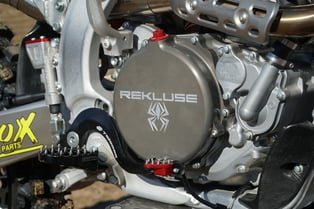
Caskey’s Take On The Motor:
“The combination of the High Compression piston, Vortex ignition, and custom mappings made the Suzuki feel a lot more like a Honda powerband. The motor pulled very strong from bottom to top and had a lot more top end and overrev than stock. This made the Suzuki feel lighter and a lot more fun to ride. The modifications allowed you to leave it in each gear longer as it would still build power versus the need to short shift the stock motor. I found I could dive inside in a corner, be confident (with the suspension to stay in the rut, and with the smooth power get on the throttle and easily clear the obstacle immediately after. This was by far the best Suzuki I have ever ridden. I only wish I could have gotten to ride it more.”
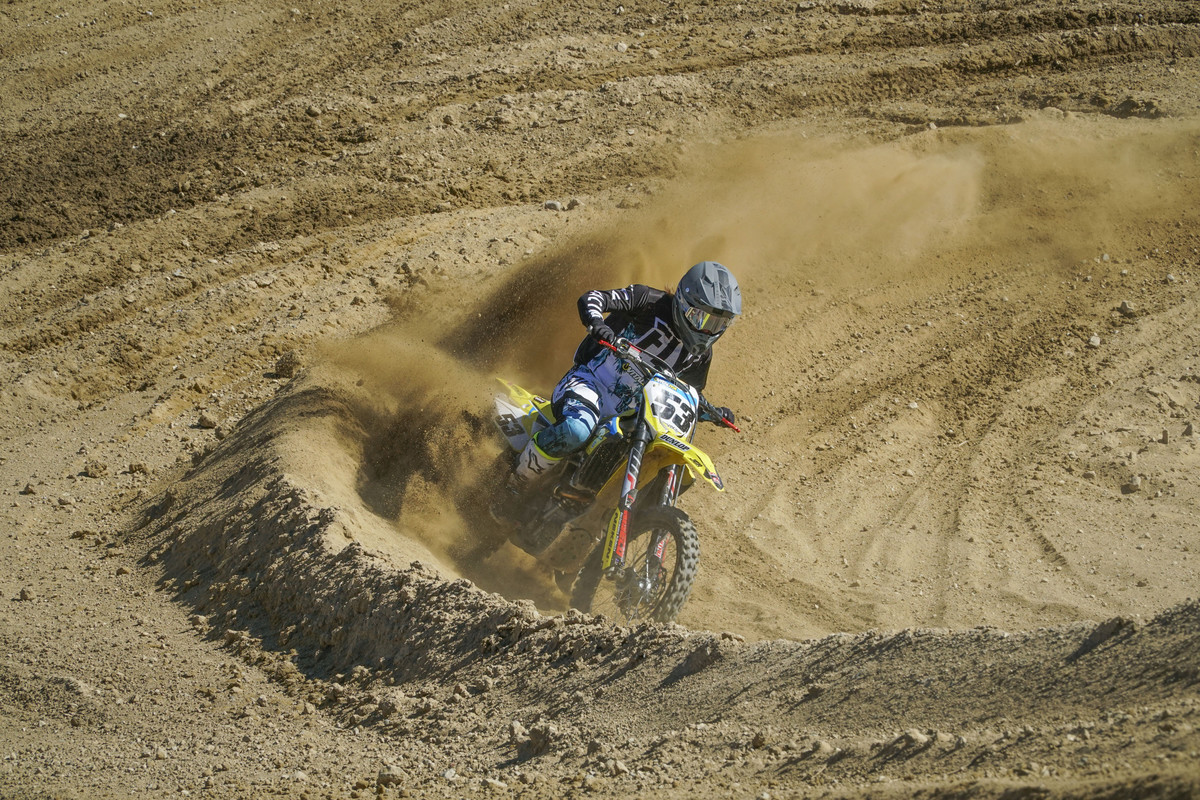
The Total Package
A few of the other mods that added some performance to the build included the Neken SFH Handlebar/Grip system. The cliff note version is that where the grips slide on to the handlebar, it is a smaller diameter, allowing the grips to be twice as thick as normal grips without being larger in outer diameter. Guys that like soft grips really liked them, but other riders that preferred a more direct feeling with the bars felt they had a vagueness that wasn’t great.
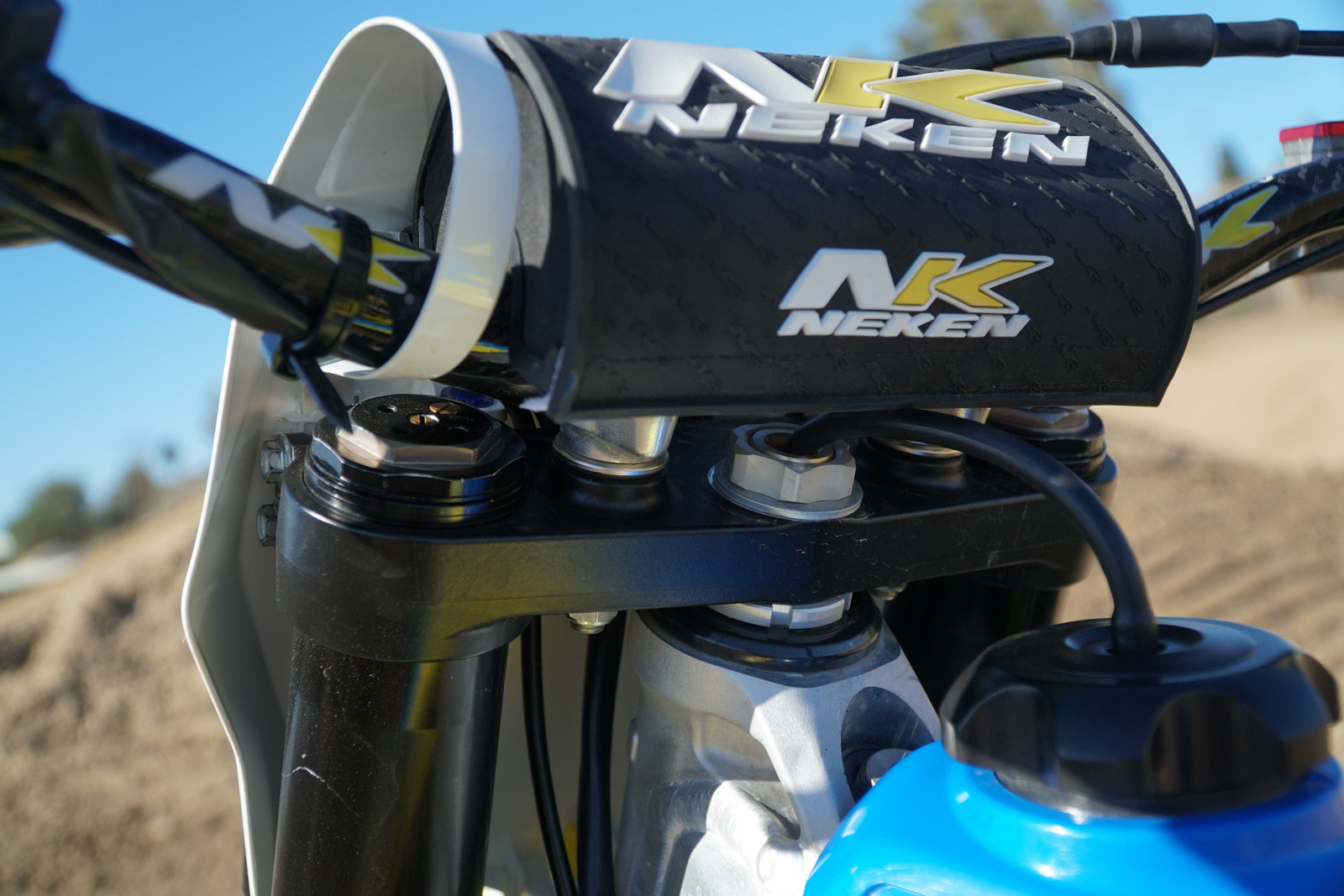
Motoseat makes a great cover that not only can be super customized to color match any crazy graphics you can come up with, they are ridiculously grippy. Actually, if you wear any of the stretchy, lightweight gear, it might be too grippy, or you might want to get a more rigid pant. The Zeta bling parts are simple bolt replacements and the foot controls felt the same as stock while being lighter. While the bolts are very light, they are also easy to strip so use caution to not over-tighten.
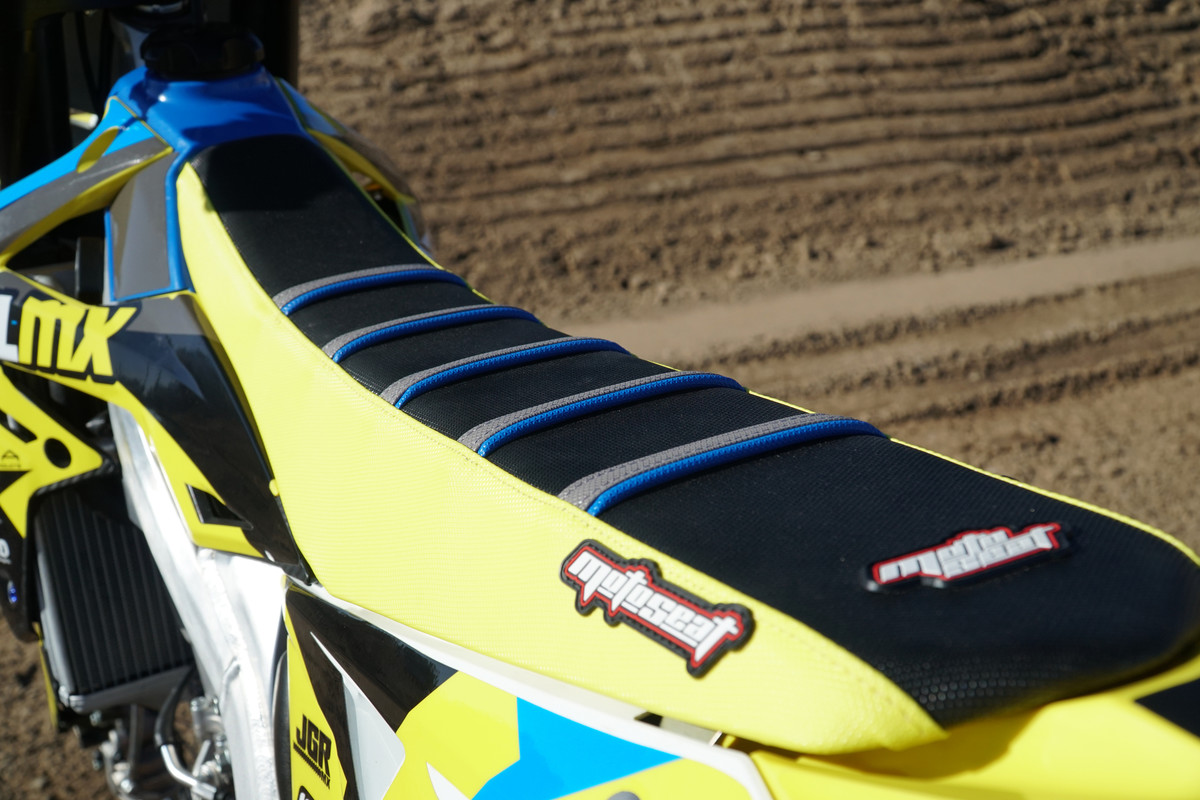
We guess the final question of this build is, did this move the Suzuki out of last place in the shootout? That’s sort of a loaded question since we would be doing a lot of hypothetical mind tricks trying to assume how all the different testers would rank it. Is it a better bike than stock? Absolutely, without question. Both testers would be stoked to ride this version of the RM-Z450 all year as their moto bike of choice, something neither would have said in the past.

Save Some Money
We know it is unreasonable to think that the average weekend rider has an extra $6,580 to make their Suzuki RM-Z450 a more comfortable ride. The main takeaway from this build is that it is possible to get the RM-Z’s chassis to feel less harsh and to inject some excitement into the motor. Our suggestion is to start with the FCP motor mounts as they are quick, easy, and relatively inexpensive compared with a full, brand new set of A-Kit suspension. Then it would be to talk to your local suspension shop to see what they can do for the stock Showa fork and shock. We know that the suspension is part of the equation so it is worth exploring more cost effective options than replacement.
In the motor department, it isn’t easy to find a cheap route. You can get a Vortex ECU a little cheaper online if you hunt a bit, then have it mapped which would be a little less or about the same as the piston and pipe combo. And, if you’re putting in a piston and pipe, it is a good idea to get the bike remapped anyway. ECUs don’t look nearly as cool as a shiny exhaust, but might be a better bang for buck mod on the RM-Z.
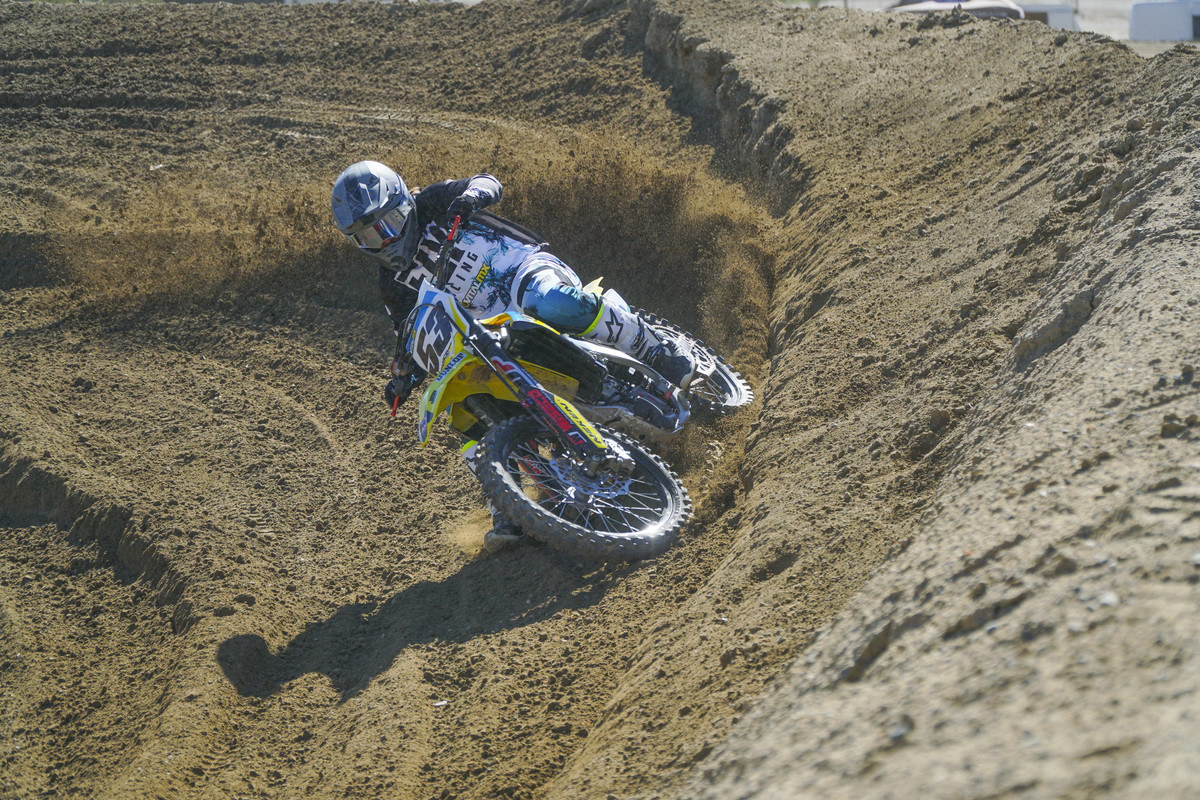
Last Words
This project 2019 Suzuki RM-Z450 is the perfect bike for the serious motocross racer that wants to be able to slam through stuff, OJ whatever, and have not a care in the world about bottoming or being beaten up. And since it retained it’s great handling characteristics, it still turns on a dime. The motor is way more exciting, though with higher compression comes higher maintenance requirements. For the average rider, they’d be stoked with this bike but it would probably be overkill and their wallet would be mangled. But if you got the cash… Why not?!
Head to Vital MX's original post here to see the complete list of parts, their prices, and where to find them.
